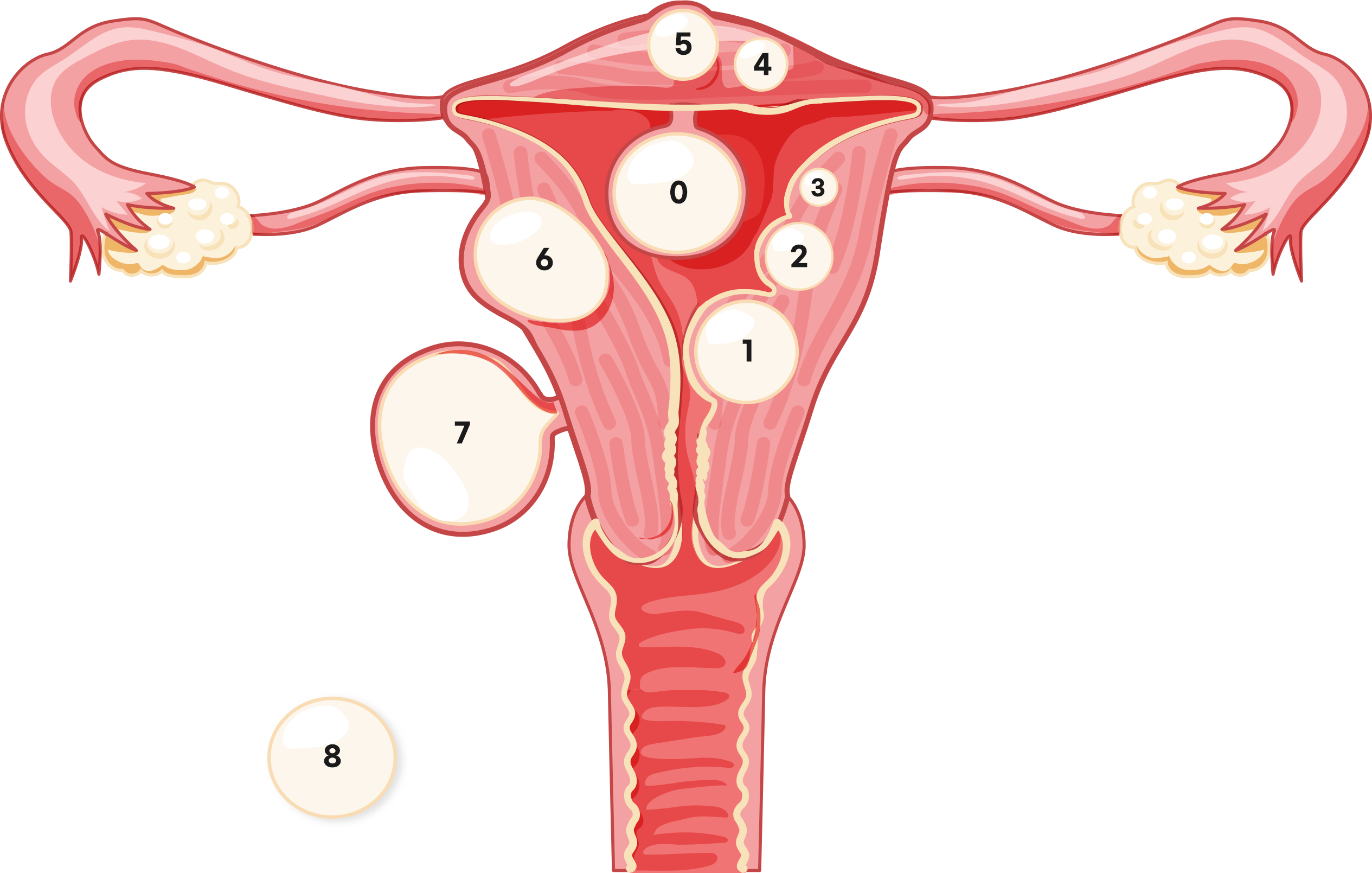0Pedunculated intracavitary
1<50% intramural
2≥50% intramural
3Contacts endometrium; 100% intramural
4intramural
5Subserosal ≥50% intramural
6Subserosal <50% intramural
7Subserosal pedunculated
8Other(specify eg, cervical, parasitic)
Candidacy for MYOBLATE™
MYOBLATE™ might be right for you
if your fibroids are diagnosed as
MYOBLATE™ might be right for you if your fibroids are diagnosed as


FIGO classification 1-4
Intramural and submucosal fibroids

Symptomatic fibroids

<8cm with best results at <6cm 2
If the uterine fibroids meet these conditions, yet radiofrequency ablation isn’t offered as a treatment,
we encourage a deeper discussion as to why it’s not offered
Story of MYOBLATE™ RFA
Listen to expert opinion and patient experience
See what people are saying
Frequently Asked Questions
How long does the procedure take?
The time required may vary depending on the size and quantity of uterine fibroids to be treated. The time required may vary depending on the size and number of uterine fibroids to be treated. The actual ablation time is quite short, and patient preparation often takes longer than the procedure itself. On average, for fibroids up to 5–6 cm in size, the entire treatment takes about 30–40 min.
Is RFA for Uterine Fibroids painful?
No, RFA for uterine fibroids is done under sedation, local, or general anesthesia to minimize discomfort during the treatment. Patients often resume normal activities within a couple of days. Following treatment, the patient may experience mild pain that is manageable with over-the-counter medications.
Can radiofrequency ablation (RFA) shrink fibroids?
There is a high chance of shrinkage as a result of RFA. Uterine fibroids stop growing and their cells are absorbed by the body over time. The goal of MYOBLATE™ RFA is to relieve uncomfortable symptoms, and enjoy an improved quality of life.
Does radiofrequency ablation affect uterine function?
RFA is a focused method of treatment that targets only the diseased tissue (the uterine fibroid) and not the entire uterus. As a result, we can anticipate that normal uterine function will be preserved.
What to expect during recovery after uterine fibroid RFA?
RFA is an outpatient treatment, so hospitalization is not generally required. After the procedure, patients typically leave the hospital in a few hours, resume mild activity in a few days, and be fully recovered in two weeks. Individual post-procedure care is determined by the individual physician.
Are there any special instructions for patients to be considered after ablation?
Individual post-procedure care is determined by the physician, however getting plenty of rest and avoiding strenuous activity for a week, are generally recommended.
Is there any follow-up care?
After radiofrequency ablation, your doctor may keep an eye on the fibroid’s volume and vascularization as well as any bleeding or other symptoms. Typically, follow-up appointments are arranged for 2, 6, and 12 months after treatment.
Is RF Ablation a Safe Procedure?
RF ablation carries risks, just like any other medical procedure. In general, fibroid RFA is regarded as a safe therapy when performed by qualified medical professionals. Since it is a Minimally-invasive treatment, it has a lower rate of complications when compared to other treatments.
LEGAL DISCLAIMER
Last Updated August 9, 2022
IMPORTANT SAFETY INFORMATION
The MYOBLATE™ electrodes are CE-certified and indicated for the treatment of uterine fibroids. The content herein is solely for informational and educational purposes and should not be construed as medical or health advice. While the MYOBLATE™ Uterine Fibroid RFA Procedure may offer substantial benefits to many patients, it is not universally applicable, and individual outcomes may vary. Please contact your medical professional for specific advice regarding the potential benefits, risks, and suitability of this treatment in your specific case.
LEGAL DISCLAIMER
This information is not intended as an offer for sale or promotion in jurisdictions where such activities are restricted. The imagery used in this material is for illustrative purposes only, featuring models, and should not be interpreted as an endorsement or representation of typical patient outcomes. For more details about information provided on this Site, please click here.

